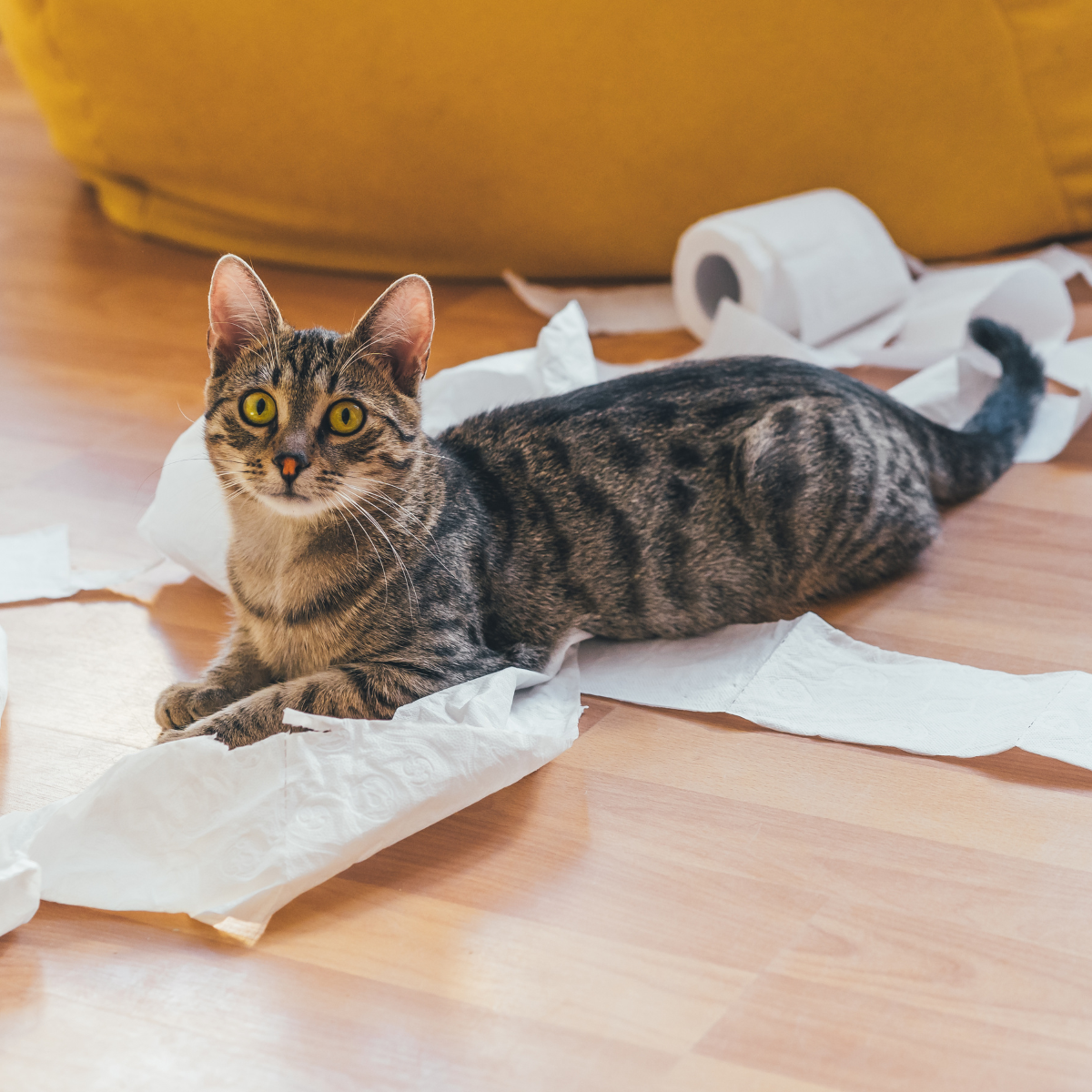Inappropriate toileting refers to cats urinating or defecating outside their litter box. This behaviour can be distressing for both cats and their owners. It’s important to understand that cats do not engage in this behaviour out of spite; there is always an underlying cause.
Common Causes
Medical Issues
Conditions such as urinary tract infections (UTIs), bladder infections, or gastrointestinal problems can cause discomfort, leading cats to avoid their litter box. Symptoms may include frequent straining, small amounts of urine, or diarrhea. Consulting a veterinarian is crucial to rule out medical causes.
Litter Box Preferences
Cats can be particular about their litter boxes. Changes in litter type, box cleanliness, or location can deter them from using it. Ensure the litter box is clean, placed in a quiet area, and filled with a litter type your cat prefers.
Environmental Stress
Changes in the household, such as moving, new people or pets, or rearranged furniture, can stress cats and lead to inappropriate toileting. Providing a stable environment and using feline pheromone diffusers like Feliway can help alleviate stress.
Territorial Marking
Spraying is a behaviour where cats release small amounts of urine on vertical surfaces to mark territory. Both male and female cats can exhibit this behaviour, especially if they are not desexed. Addressing underlying stressors and considering desexing can reduce marking behaviour.
Practical Solutions
- Veterinary Consultation: Always consult a veterinarian to rule out medical conditions.
- Litter Box Management: Maintain cleanliness by scooping daily, and ensure the box is in a quiet, accessible location.
- Litter tray type: Some cats prefer different types of litter trays. Some prefer a tray without a top and others demand a top for their litter tray. Kittens and geriatric cats may prefer a litter tray with low sides so they can easily get in and use it.
- Litter type: Try using another litter type (eg. paper litter, crystals or clay) as the cat may be used to, or prefer a specific type of litter.
- Litter tray liner: Some cats don’t like them. If you’re using one, try removing it.
- Positive Reinforcement: Reward your cat with treats or affection when they use the litter box appropriately.
- Professional Help: If the behaviour persists, consider consulting a feline behaviorist for tailored advice.
By understanding the reasons behind inappropriate toileting and implementing these strategies, you can help your cat return to using the litter box and maintain a harmonious home environment.



